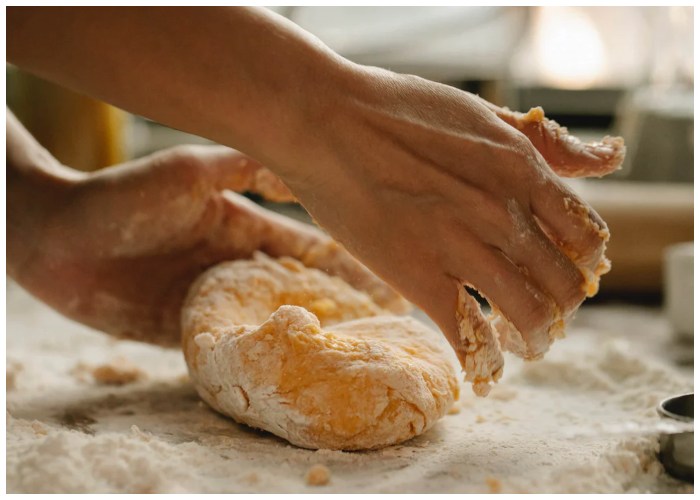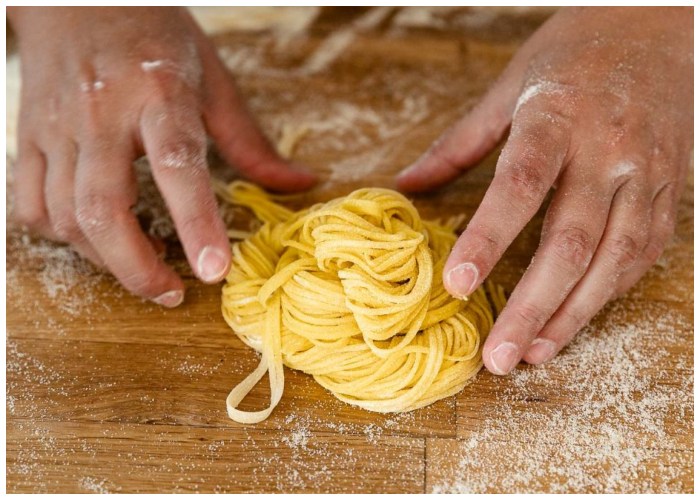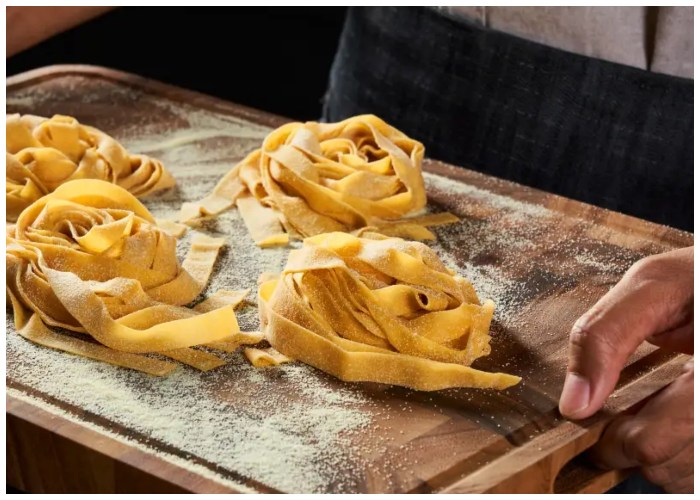Making homemade pasta may seem like an ambitious task, but with the right approach, it can be a straightforward and rewarding experience. Fresh pasta has a texture and flavor that store-bought versions simply can’t match, and once you master the technique, you’ll never look at boxed pasta the same way again. Whether you’re a first-time pasta maker or looking to refine your skills, these essential tips will help ensure success in your kitchen.
1. Start with the Right Dough
The foundation of great homemade pasta is the dough. If your dough is too dry, it will crumble as you roll it out; too wet, and it will stick to everything. The key is achieving a smooth, elastic consistency that’s easy to handle.
- Stick to a classic pasta dough recipe with flour and eggs for best results.
- If the dough feels dry, add a few drops of water. If it’s too sticky, lightly dust it with flour.
- Knead the dough thoroughly (more on that next) to develop the gluten, which gives pasta its structure.

2. Knead Until Perfectly Smooth
Kneading is the most important step in pasta-making. It strengthens the dough, ensuring it rolls out easily and holds its shape when cooked. If you rush this step, you’ll end up with pasta that’s difficult to work with.
- Knead the dough for at least 10 minutes until it becomes smooth and elastic.
- Halfway through, check for air pockets or dry spots—if you find any, keep kneading.
- The dough is ready when it bounces back slightly when pressed with your finger.
If kneading by hand feels too tedious, a stand mixer with a dough hook can help speed up the process.
3. Let the Dough Rest
After kneading, the dough needs to rest before rolling it out. Resting allows the gluten to relax, making the dough easier to shape.
- Wrap the dough in plastic wrap or cover it with a kitchen towel to prevent it from drying out.
- Let it sit at room temperature for at least 30 minutes before rolling.
- If you’re making pasta in advance, store it in the fridge, but let it come back to room temperature before rolling.
4. Work in Small Portions to Prevent Drying
Once your dough is ready, divide it into smaller portions instead of rolling it out all at once.
- Cover the pieces you’re not using with a damp towel to keep them from drying out.
- Work on one section at a time to ensure consistency in thickness and texture.
- If the dough starts feeling too stiff, knead it slightly before rolling it out.

5. Roll and Cut with Precision
Whether using a pasta machine or rolling by hand, achieving the right thickness is key.
- If using a pasta machine, start at the widest setting and gradually work down to thinner settings.
- If rolling by hand, aim for a thickness of about 1/16 inch—thin enough to be flexible but sturdy enough to hold its shape.
- When cutting, use a sharp knife or pasta cutter for clean, even noodles.
6. Have a Second Pair of Hands If Possible
Pasta-making is much easier when you have help. Rolling long sheets of pasta through a machine can be tricky when working alone.
- One person can feed the dough into the pasta roller while the other catches it on the other side.
- If cutting noodles, immediately separate the strands to prevent them from sticking together.
- If working solo, take your time and work in manageable sections to avoid tearing or sticking.
7. Use the Right Amount of Flour
Flour prevents pasta from sticking but should be used sparingly. Too much can make the dough dry and affect the texture.
- Lightly dust your work surface and rolling pin, but avoid overloading with flour.
- If using a pasta machine, dust the dough very lightly before rolling it through.
- Once cut, gently toss noodles with a small amount of flour or semolina to prevent them from clumping.
8. Let Fresh Pasta Dry Before Cooking
Freshly made pasta cooks faster than dried pasta and can be delicate if cooked too soon.
- Allow pasta to dry for at least 15-30 minutes before cooking.
- Hang long pasta strands on a drying rack or spread them out on a floured surface.
- If making pasta in advance, store it in the fridge for up to 24 hours or freeze it for longer storage.

9. Cook in Well-Salted Boiling Water
Fresh pasta requires a slightly different cooking approach than store-bought dried pasta.
- Use a large pot with plenty of water to prevent sticking.
- Salt the water generously—fresh pasta absorbs flavor quickly, and this step enhances its taste.
- Cook for 2-4 minutes, depending on thickness. Fresh pasta cooks much faster than dried pasta, so keep an eye on it.
10. Pair with Simple, High-Quality Sauces
Fresh pasta shines when paired with simple, well-balanced sauces.
- For egg pasta: Try light butter sauces, olive oil with garlic, or classic tomato sauce.
- For filled pasta: Brown butter and sage, light cream sauces, or a drizzle of high-quality olive oil work best.
- Avoid overly heavy sauces that can overwhelm the delicate texture of fresh pasta.